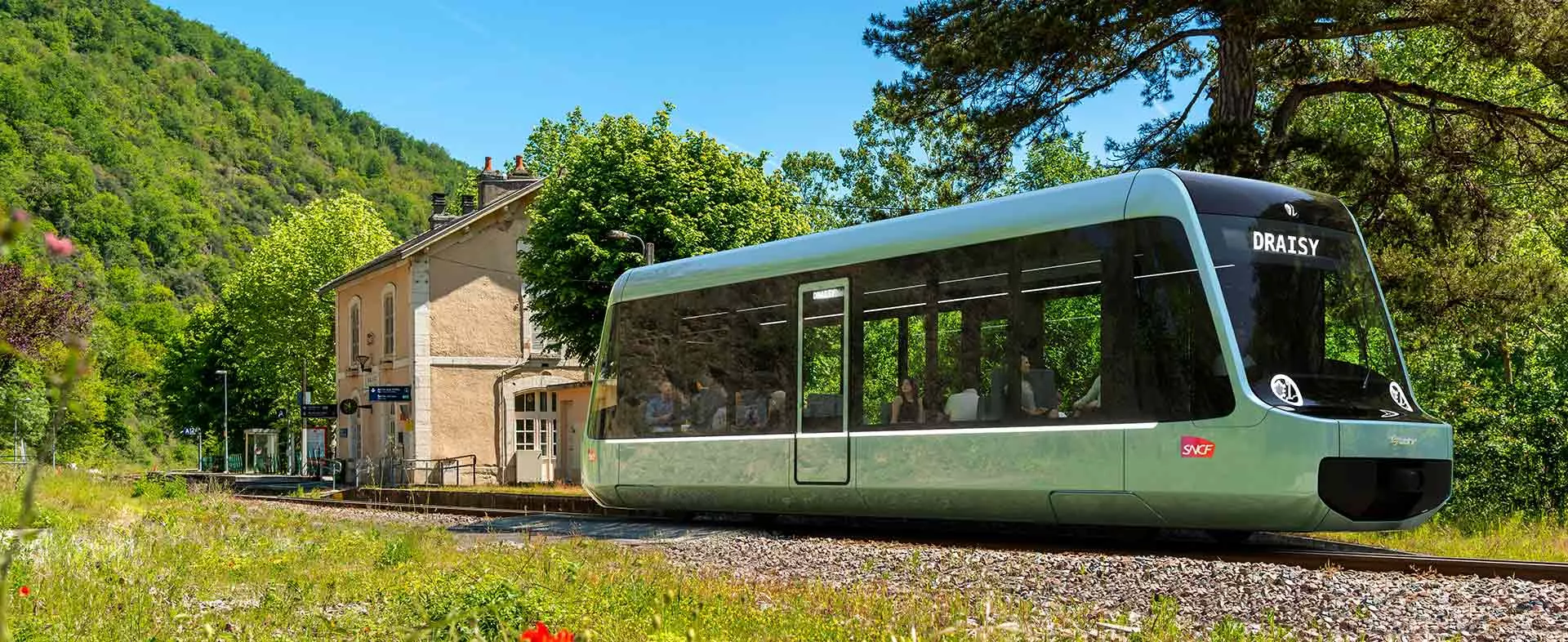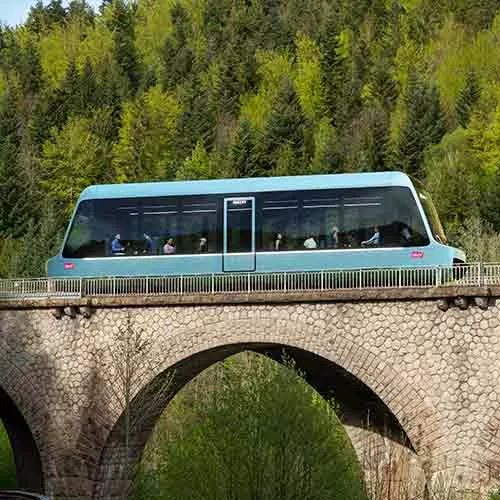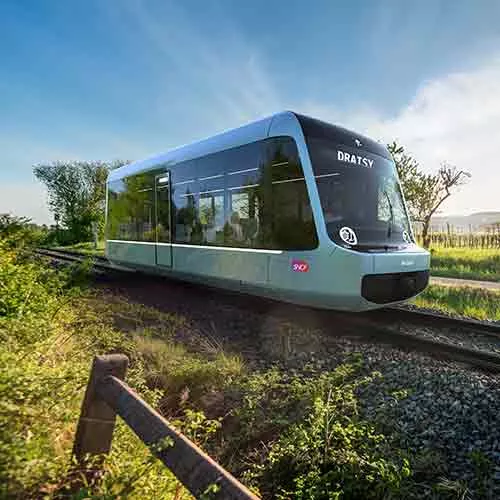
DRAISY—a customized train for the smallest lines
This light train project will produce new, lower-capacity rolling stock to complement today’s conventional TERs and tomorrow’s TELLis. DRAISY is funded by ADEME as part of the France 2030 investment plan.
Many of France’s rural rail lines have languished amid low passenger demand. With DRAISY, we are reviving them by offering a service tailored to the needs of rural areas. How so? By designing a light, economical and environmentally-friendly train system. This project is financed by ADEME as part of the France 2030 programme. We’re taking a systemic approach with 4 key elements:
- rolling stock
- infrastructure
- operations
- regulatory issues
DRAISY, the light train designed for small select lines
A decarbonized alternative to driving
For French regional governments that act as their own mobility authorities, small lines can connect isolated communities, offering a low-carbon alternative to privately owned cars.
This led us to form a consortium with 4 partners: Lohr, an industrial company; GCK Battery and Stations-e, both SMEs; and Railenium, a technology research institute. Together, we’ve envisioned a new “country train” system that caters to rural mobility needs.
Reviving local rail service
We and our partners want to restore the appeal of “small lines” (around 100 kilometres long) by offering more frequent service. DRAISY will serve stations at the ends of larger lines, allowing passengers to make a connection directly in order to take other trains on the main network.

100%
Electric batteries will supply 100% of DRAISY’s power

19
metric tonnes and 14 metres long

80
DRAISY will seat 30 passengers and carry 80

Modularity and micro-freight
We used rural ridership studies to design DRAISY’s rolling stock for local service. Its modular interior will seat 30 passengers and carry up to 80, plus bikes and micro-freight.
Good for business…
We expect DRAISY’s operation and maintenance costs to be about half those of today’s regional trains. At 20 metric tonnes and 14 metres long, rolling stock is only two-thirds the size of today’s conventional train. This will sharply reduce energy consumption and make fewer demands on track. DRAISY’s design incorporates and adapts components that are already available, such as traction motors. It also includes an onboard system of surveillance sensors, making it easier to anticipate maintenance.
… and good for the planet
We’re also aiming for zero direct emissions, which will shrink both costs and the project’s carbon footprint. DRAISY trains will run on batteries, with a rapid recharging system to top them up right at the platform in specially outfitted stations.
Our aims
To offer rural communities an economical rail solution that meets their needs, the DRAISY consortium has set these goals:
- offer an economical last-mile transport solution, so France’s regions can boost rural service frequency for less than the cost of conventional trains
- give rural communities an alternative to privately owned cars, especially during the day
- maintain connections between small rural lines and France’s national network tailor the train’s interior to local needs, such as carrying bikes and micro-freigh
Key innovations
- a specially designed rolling platform that can be adapted to local needs
- a 100% electric power system with recharging at platforms
- components from the automotive industry
- lighter, less expensive new infrastructure components
- steerable wheelsets to reduce friction and wear
- a “light” driver’s cabin, optimized for easier driving on small rural lines
- digitalized surveillance of infrastructure and rolling stock
- new operating guidelines
- safe, flexible traffic control
DRAISY milestones
Share the article